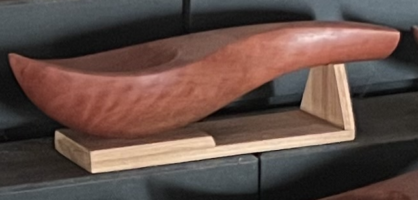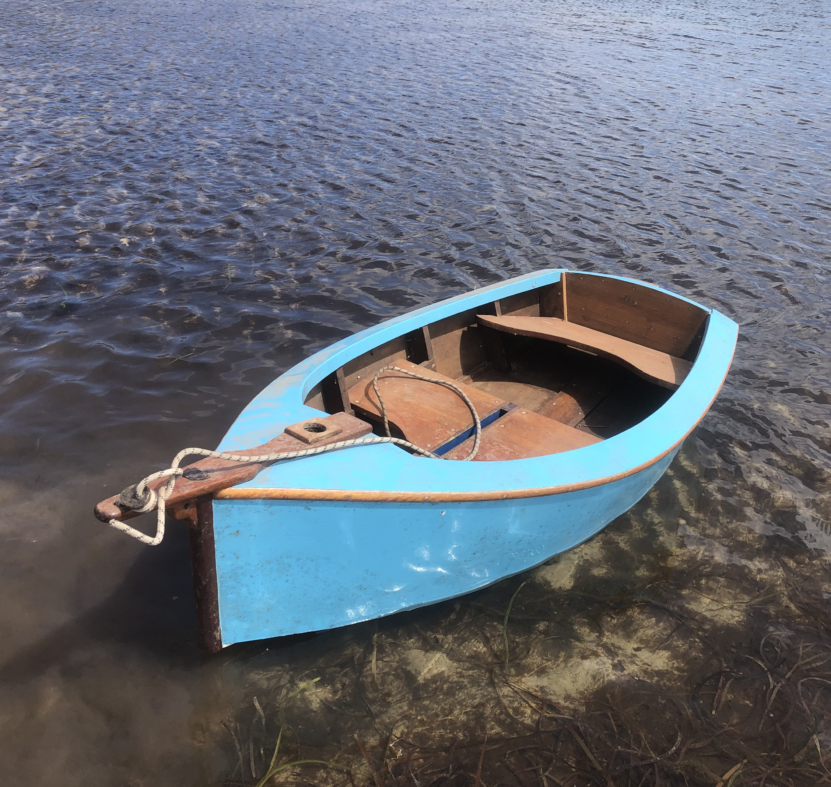I made for the cove, a lovely branch of Gloucester’s fine harbour, again to look the ‘Spray’ over and again to weigh the voyage, and my feelings, and all that. The bay was feather-white as my little vessel tore in, smothered in foam. It was my first experience of coming into port alone, with a craft of any size, and in among shipping. Old fishermen ran down to the wharf for which the ‘Spray’ was heading, apparently intent on braining herself there. I hardly know how a calamity was averted, but with my heart in my mouth, almost, I let go the wheel, stepped quickly forward, and downed the jib. The sloop naturally rounded in the wind, and just ranging ahead, laid her cheek against a mooring-pile at the windward corner of the wharf, so quietly, after all, that she would not have broken an egg. Very leisurely I passed a rope around the post, and she was moored. Then a cheer went up from the little crowd on the wharf. “You could n’t ‘a’ done it better” cried an old skipper,”if you weighed a ton”. Now, my weight was rather less than the fifteenth part of a ton, but I said nothing, only putting on a look of careless indifference to say for me, “Oh, that is nothing”; for some of the ablest sailors in the world were looking at me, and my wish was not to appear green, for I had a mind to stay in Gloucester several days. Had I uttered a word it surely would have betrayed me, for I was still quite nervous and short of breath.
Beautifully written, and a wonderful story. That is Captain Joshua Slocum spinning a yarn, as he did so well. He was a master mariner; masterful also when it came to words: indeed, he wanted to be known primarily as a writer – and Sailing Alone around the World is surely the greatest maritime yarn ever spun.
The paragraph came to mind when I was thinking further about our Tasmanian friend, Captain Tom Spaulding. You may remember a previous commentary, in which I quoted from Traders under Sail, by Captain James Gillespie:
At the time of the sale, Captain Tom Spaulding inspected the vessel on a slipway, and being satisfied that she was sound, and would suit his purpose of trading between Tasmanian ports and Melbourne, said that he would purchase the ship if the vendor was prepared to take the auxiliary engine out. He wanted no part of these modern inventions and preferred to rely on the power of the wind and his own skill as a sailor. The vendor was happy to comply with the conditions of sale and had the engine removed.
Now that is pure class. What a man, and what a mariner. He put himself on the line; placed his faith in the ‘eternal verities’….the never-ending winds of the wide ocean; the sun and moon and stars overhead; the passage of seabirds north, south, east, west; the tides and currents, signs and symbols of long experience and intuition.
We only have a few paragraphs about Captain Spaulding; enough, though, to give us a glimpse of his character.
Let us call him a sort of Tasmanian ‘Slocum’. I can imagine those two in the same room – I should say, cabin – telling what they knew, perhaps in company with Thoreau and Villiers and Howard I Chapelle and William Atkinson and Weston Martyr and the like. Dad would be there, quietly listening. I would no doubt be a fly on the wall: listening and learning, as these men and others (all jumbled up in my mind) shared their practical wisdom, their philosophies, their understanding of what matters – of what lasts the distance.
At first glance, Thoreau might seem out of place in that company of mariners. Certainly, he was a navigator of less obvious ‘tides and currents’. He explored the rivers of Maine Woods, by canoe; in partnership with his brother, he built a wooden vessel: a dory-like boat named Musketaquid; he lived for two years in a tiny cabin, beside Walden Pond; he walked the beaches of Cape Cod, and thereafter wrote a book of maritime reflections.
In short, I believe he was a master mariner at heart, and in spirit. He cherished his independence – cherished, too, the ‘eternal verities’ mentioned above. They were his guides and source of inspiration. He followed his own path without compromise, and without faltering. We could almost call him prescient:
If a man loses pace with his companions, perhaps it is because he hears a different drummer. Let him step to the music he hears, however measured or far away.
Which of course brings me back to Captain Tom Spaulding, and Traders under Sail. Here he is once again, stepping to the music of far away – the music best suited to his temperament and philosophy:
In 1934 Captain Spaulding had the Aristides lengthened at Dover, in Tasmania, by Ernest Higgs. Her new dimensions were L 100.3′ x B 22.3′ x D 6.7′ and her tonnage was increased from 84 tons to 118 tons. With the tonnage now being in excess of 100 tons it was necessary for the vessel to be piloted in and out of ports where compulsory pilotage applied, until the master had completed three voyages in and out of such ports with a pilot in charge. He then obtained a pilotage exemption certificate for those ports, which would permit him to take his vessel in and out without engaging the service of a licensed pilot.
A while back I came across a tiny photo of the captain, standing squarely on the deck of his vessel, below a great expanse of canvas. He is wearing an old waistcoat and battered hat, and from afar looks to be a little stout – one might say, immoveable. When I tried to enlarge the photo, the outlines became blurred: he belongs to a distant world which was, even then, slipping from his grasp….
Well, he chose his Way, and (like Slocum and Thoreau) did not falter – chose to maintain the nautical skills based on tradition and commonsense. Some might call him old-fashioned; I regard him as far-sighted. But more of that later. For the moment….here is the last of those few, precious paragraphs from Traders under Sail – brief and to the point:
The Aristides was wrecked on Three Hummock Island in Bass Strait, and her register closed in 1940.
Not an unfamiliar story – and I cannot yet say whether it has a direct bearing on the life of Captain Tom Spaulding. I will think on it.

















